This post may contain affiliate links. Read my full disclosure here.
As an Amazon Associate I earn from qualifying purchases.
Whole grain cornbread only takes a few extra steps, as long as you have the ingredients on hand. I promise, it’s worth it.
A few Saturdays ago, I was home alone with the kiddos.
For breakfast, I made fresh milled Spelt pancakes with some crispy bacon and of course a morning staple: eggs. Once we were finished eating, the boys transitioned to playing in the living room and I proceeded to clean the kitchen.
Remember, it was a Saturday morning and I was alone so breakfast may have been a tad later than usual.
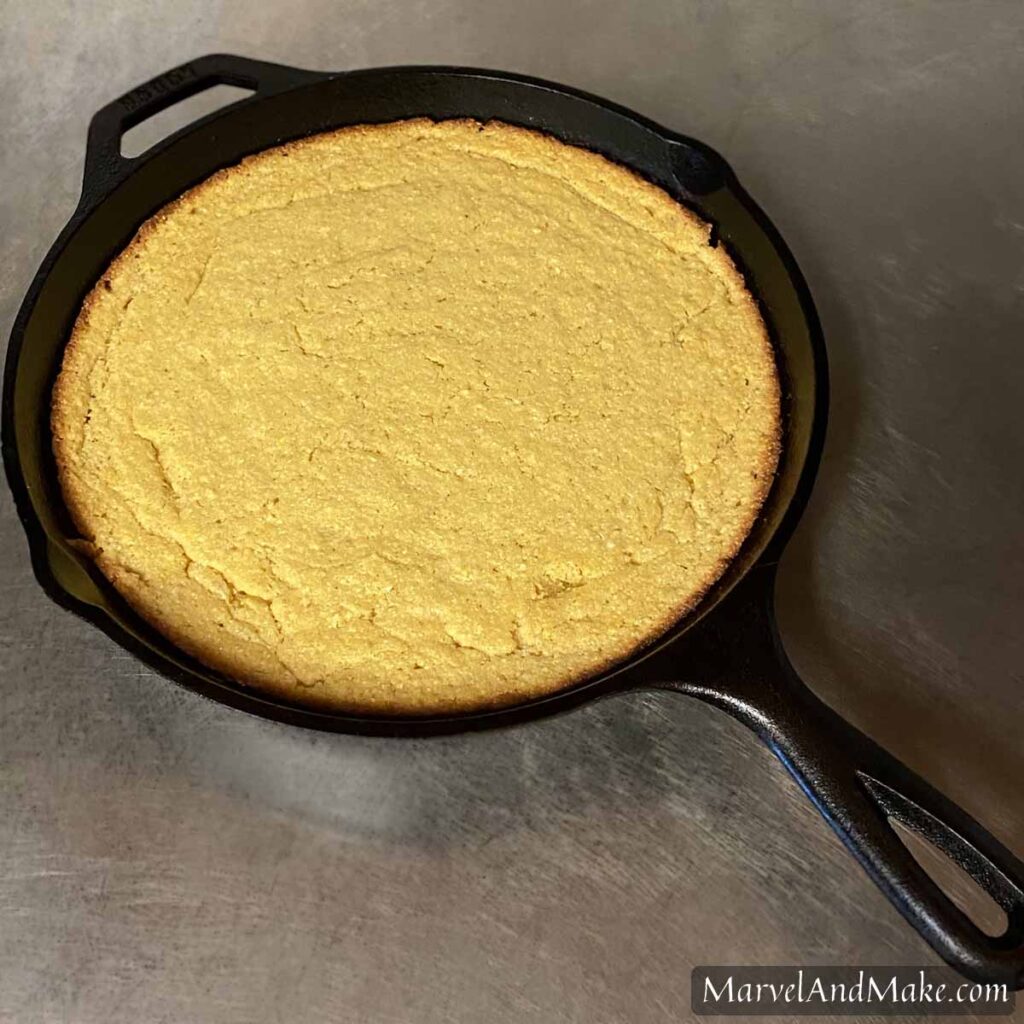
Always more to cook…
As I’m cleaning, I started thinking about what to serve for lunch and I decided on Fordhook Lima beans (that we had recently purchased at the Farmer’s Market) cooked with smoked pork neck bones (from a local farm), served overtop cornbread.
I pulled the limas and bones from the freezer so they would start to thaw – check out my no-fail recipe on how to prepare these here – and continued to clean. The boys were being boys (loud and wild) and I just didn’t feel like milling up corn and wheat for homemade cornbread.
We happened to have a box of cornmeal tucked away (don’t ask me why) and as I stood in my pantry reading the mile-long list of ingredients I said out loud to myself “this will be ok just this once.”
But…as soon as the words left my mouth I put it back on the shelf and grabbed my whole kernel popcorn. With the help of an electric grain mill, popcorn or dent corn can quickly be turned into cornmeal for occasions just like this one.
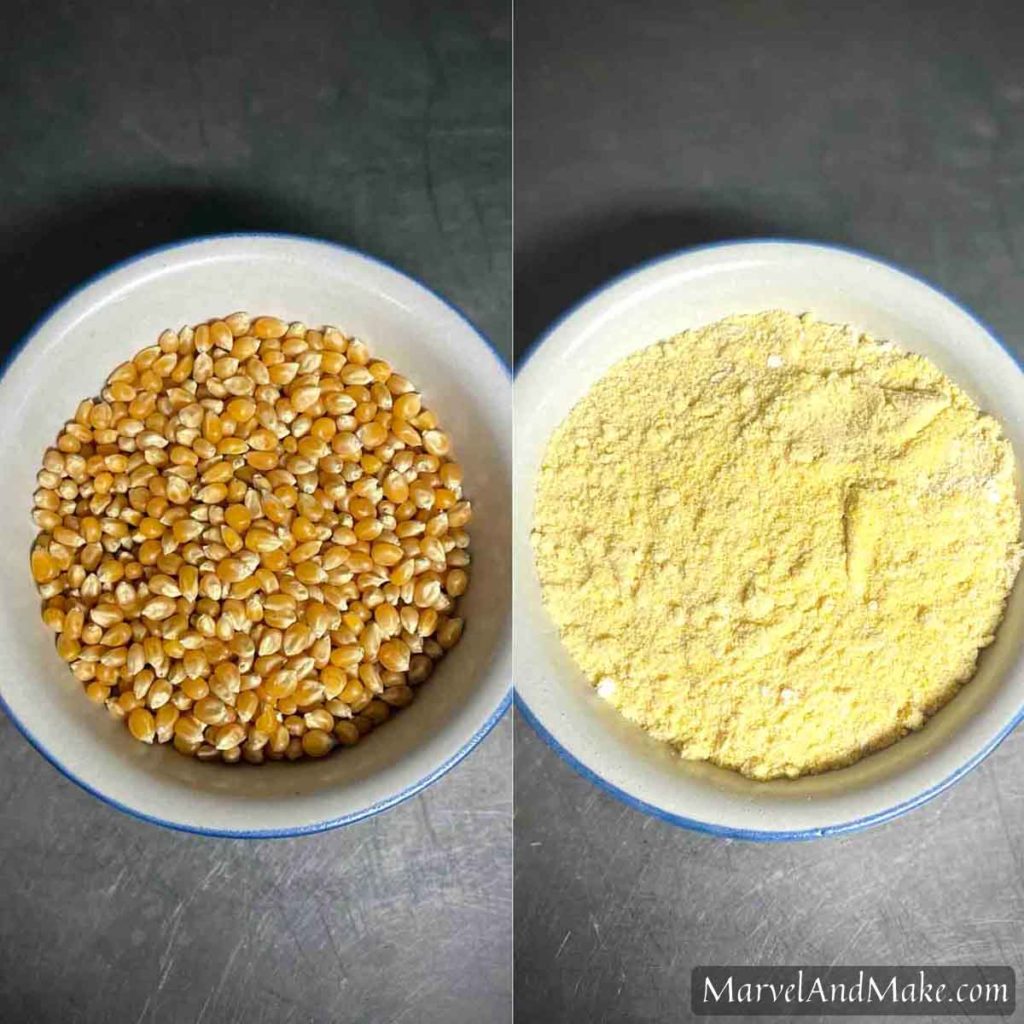
The why
My growing boys eat what I put in front of them. When I can control what they consume (ie. when we’re eating at home and not in a restaurant), I want to fill them with only what God intended as food. I don’t care what government organization has blessed high fructose corn syrup…I’ve done my own research and I don’t want it in their systems.
Fresh milled whole grains
I recall the intimidation of making flour at home when I first started out. If you are new to milling grains right there in your own kitchen, I’ll give you the condensed version as to why you would even consider this. Purchasing all purpose flour – or in this case, cornmeal – is much simpler. But, as with most packaged foods nowadays, these items fall into the “processed” category. So, if your goal is to provide nutrient dense, whole-food meals for you and your family, you’ll want to keep reading.
Fresh milled grains are not only the healthier alternative to packaged flour, but they also leave you feeling fuller longer. This is because they are presented in their whole state – whether milled into fine flour or coarse cornmeal. For more on why milling grains at home is the better choice and how to get started, check out my article: Homemade Flour from Whole Grains.
Corn Nutrition
Home-milling allows the vital nutrients found in grains to remain intact. Corn in its complete state (as a whole grain) is high in B vitamins and Niacin. It also contains a variety of other minerals such as vitamin A, Magnesium, Manganese, Thiamine, and Phosphorus.
Is Corn Really Gluten-Free?
Corn is naturally gluten-free. If you have Celiac disease and cannot tolerate gluten even in small doses, always check the label to be certain the corn wasn’t processed in a facility that may have allowed it to come in contact with wheat.
The Best Corn for Home-Milling
Corn that’s considered a “grain” and can be used for milling into either coarse cornmeal or a fine flour falls into the “field corn” category. Meaning, it was dried on the stalk while still in the field. The two main groups of field corn are dent corn (typically yellow or white or even blue) and popcorn.
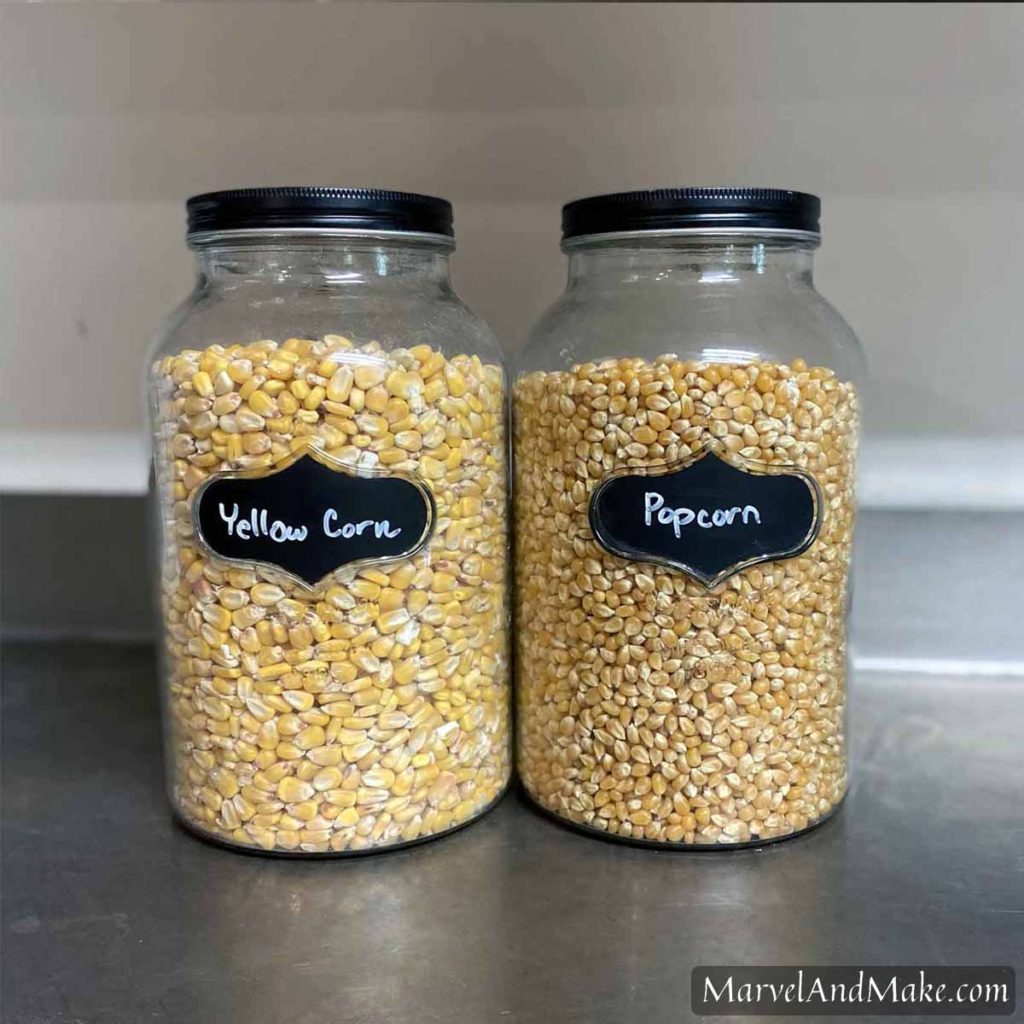
Dent corn is widely recommended for grits, cornbread, polenta, etc. but popcorn is also a great option. When I had my NutriMill Classic Grain Mill, I always used popcorn because I found it to have a naturally sweeter taste. Now that I have a MockMill stone mill, I use dent corn because popcorn can’t be milled in a stone mill due to its hard outer layer.
A Note About Milling
Depending on your mill, you might need to run the kernels through the mill on the coarse setting first and then cycle them through a second time to get them more fine.
Most mills allow you to adjust the settings from fine to coarse. This is entirely up to you. I prefer a fine corn flour for cornbread but most cornbread recipes will call for coarsely ground grains.
Let’s Get To Cooking
So, now that you know about milling up your flour and corn for this recipe, let’s get started.
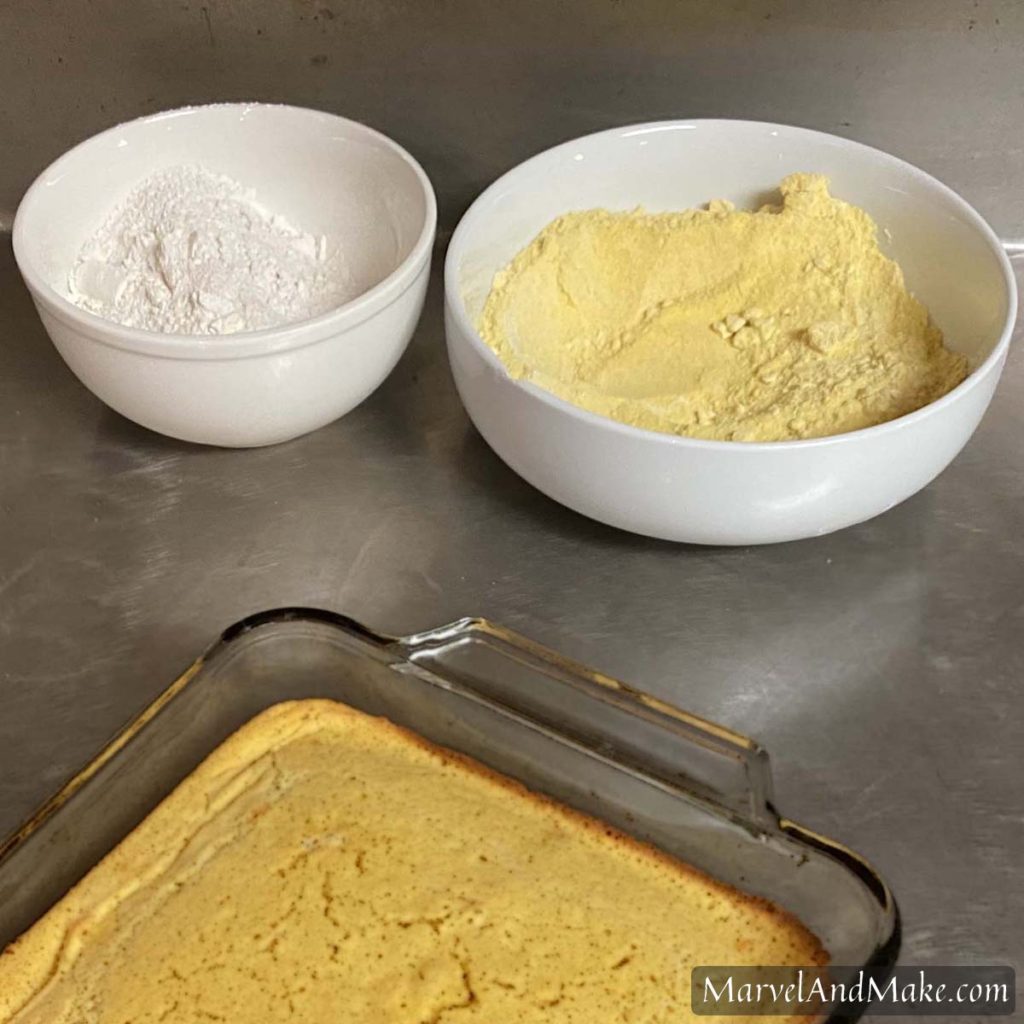
Preheat your oven to 400 degrees Fahrenheit. Put 1 Tablespoon of real grass-fed butter in an 8×8 pan (I always prefer glass) and carefully place inside of the preheating oven. Watch the butter so it doesn’t burn and remove the pan once it’s melted. (I haven’t tested this with a cast iron skillet because I don’t have one that’s the right size. I know it will work, but if you try it check for doneness around the 15 minute mark.)
While the oven preheats, mill your grains.
You need 1 cup of Soft White Wheat flour (you can use other grains like Spelt or Barley but I’d stay away from pre-packaged flour) and 1 cup of Corn flour. Mill and measure these separately. NOTE: only mill 3/4 cup of each grain because fresh milled grains always yield more flour.
Dry Ingredients
In a large bowl or measuring cup, whisk together the dry ingredients: 1 cup of corn flour, 1 cup wheat flour, 3/4 cup of honey granules (other sweeteners work fine, this is just my favorite), 1 Tbsp. of baking powder, and 1 tsp of salt. Set this mixture aside.
Wet Ingredients
Place 4 Tbsp. of butter (real butter again, please) into a small pot and melt over medium-high heat. Yes, you can microwave it instead. Pour the butter into a separate bowl and whisk in 3/4 cup of buttermilk and 2 Tbsp. of sour cream. NOTE: if you don’t have buttermilk: before you begin this recipe, measure 3/4 cup of milk and add 1 Tbsp. of lemon juice or vinegar. Let it sit 5-10 minutes. It will thicken slightly and work in a pinch but nothing replaces real buttermilk (sorry). You can also substitute plain Greek yogurt.
Once the butter, buttermilk, and sour cream is well blended, add 2 eggs – one at a time, whisking constantly. NOTE: never add cold eggs directly to hot liquid (like melted butter) because it will heat them too quickly and they’ll cook.
Pour the wet ingredients into the dry and mix until just incorporated (i.e. don’t over mix). Carefully remove the hot pan from the preheated oven. Pour the batter into the pan – do NOT stir. Place the pan back into the hot oven and cook for 20 minutes.
Remove from the oven and serve warm with (you guessed it) real butter or a southern staple meal like my Smoky One-Pot Lima Beans.
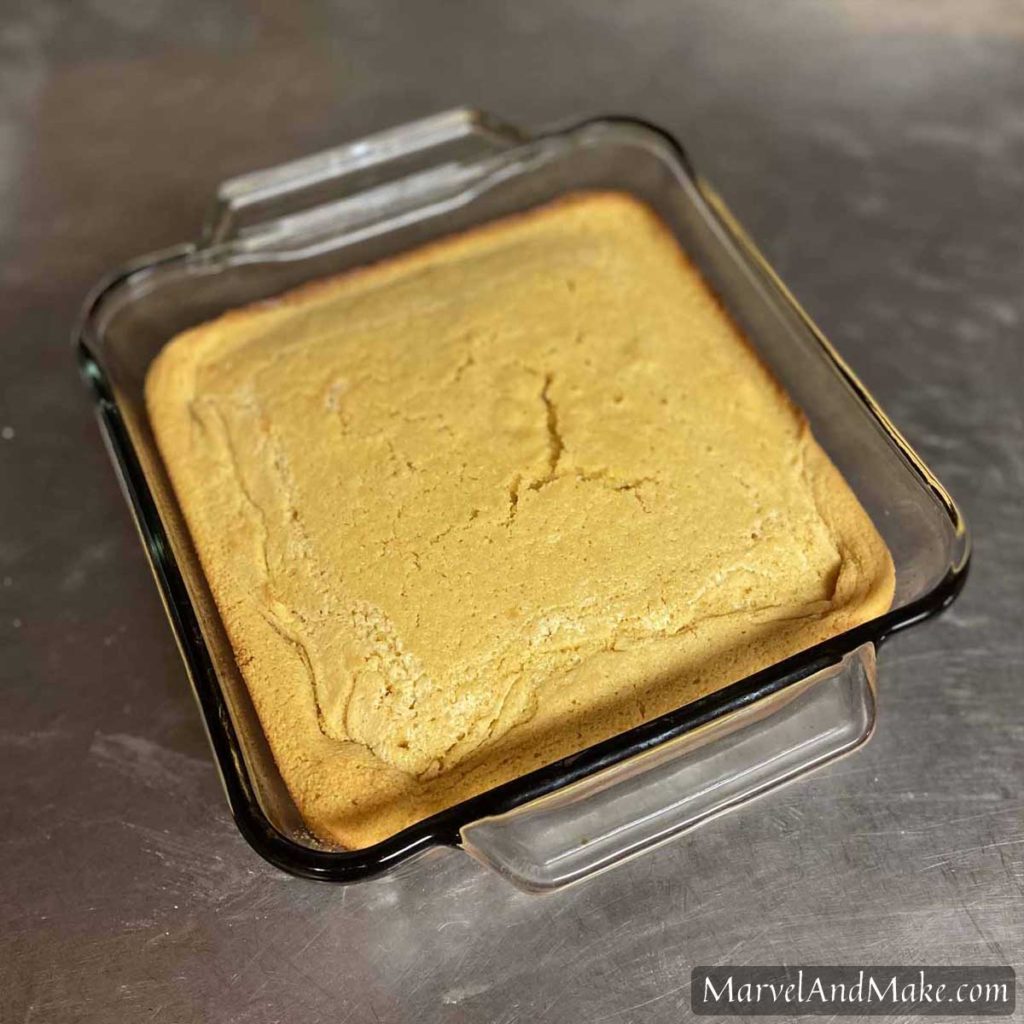
Leave a comment below letting me know if you tried this recipe and what you thought!

Whole Grain Southern Sweet Cornbread
Ingredients
- 5 tbsp Butter, divided
- 1 cup Corn Flour (Preferably freshly milled popcorn)
- 1 cup Soft White Wheat Flour, freshly milled
- ¾ cup Honey Granules or Sucanat or White Sugar
- 1 tbsp Baking Powder
- 1 tsp Salt
- ¾ cup Buttermilk*
- 2 tbsp Sour Cream
- 2 Eggs
Instructions
- Preheat oven to 400° F. Place 1 tablespoon of butter into 8×8 pan and set inside the preheating oven. Watch butter so it doesn't burn, remove pan when melted.5 tbsp Butter, divided
- In large bowl, whisk together dry ingredients: corn flour, wheat flour, honey granules, baking powder, and salt. Set aside.1 cup Corn Flour (Preferably freshly milled popcorn), 1 cup Soft White Wheat Flour, freshly milled, ¾ cup Honey Granules or Sucanat or White Sugar, 1 tbsp Baking Powder, 1 tsp Salt
- Melt 4 Tbsp of butter in separate bowl, then whisk in other wet ingredients: buttermilk, sour cream, and lastly the eggs. (Be careful not to add cold eggs directly to melted butter or it will cook them.)5 tbsp Butter, divided, ¾ cup Buttermilk*, 2 tbsp Sour Cream, 2 Eggs
- All at once, add wet ingredients to dry and mix until just incorporated.
- Carefully remove hot pan from preheated oven. Pour batter into pan, do NOT stir. Place back into hot oven and cook for 20 minutes.
- Remove from oven and serve warm. Keeps in the fridge for 3-5 days.
Notes
Nutrition
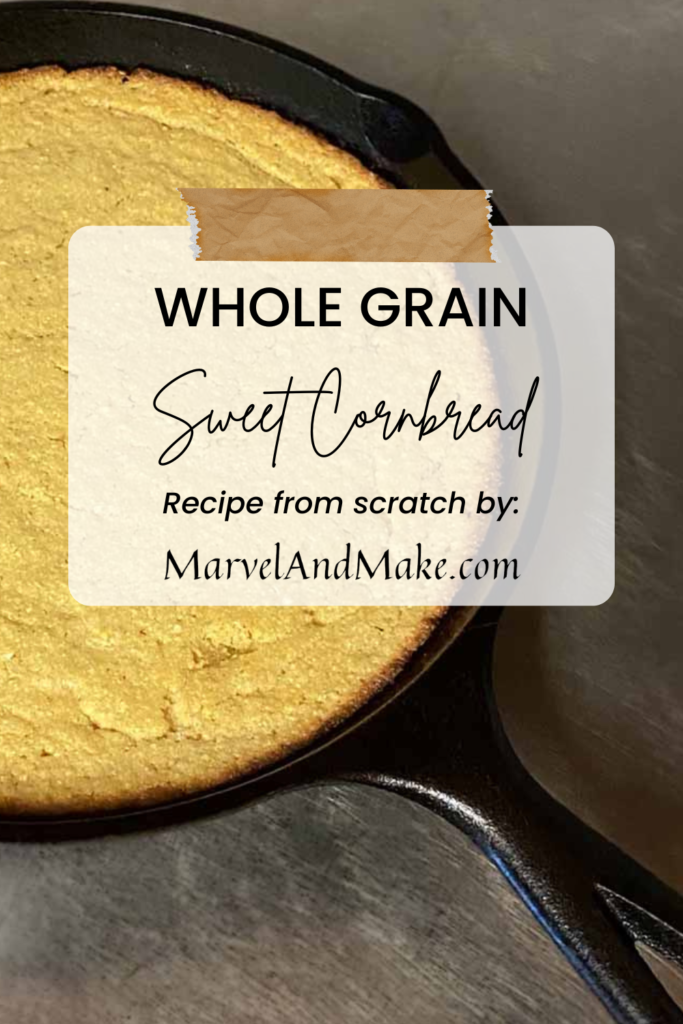

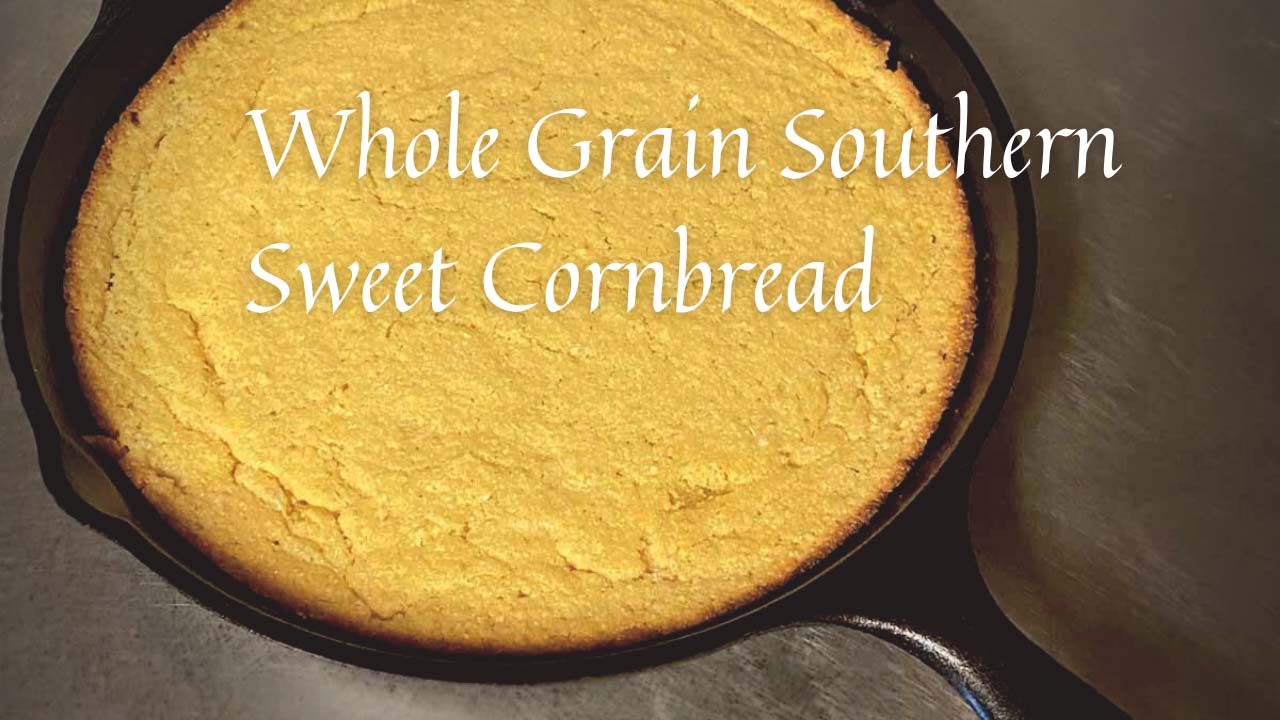
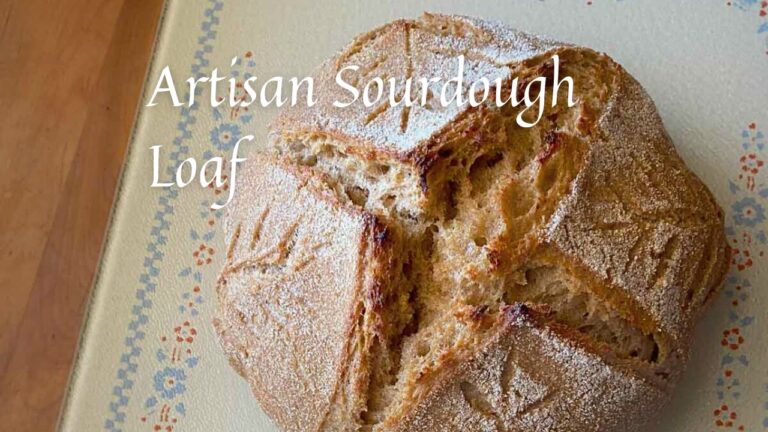
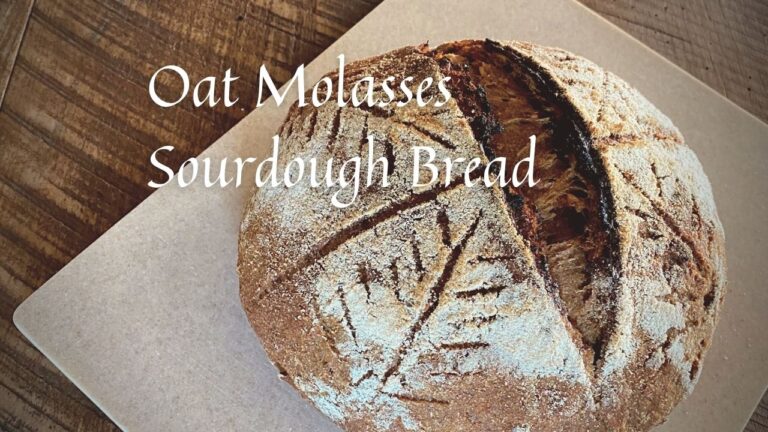
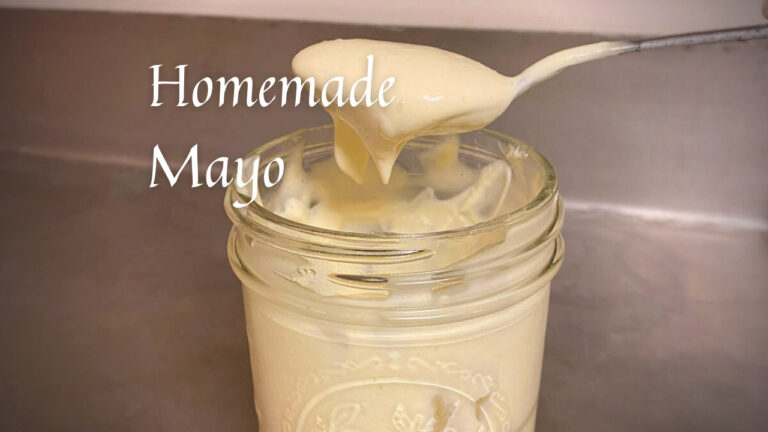
Just used a mix in a bind (New Years day) and vowed to do better next time. Guess I have to purchase a grain mill now 😋🤤
Once you make the switch, it becomes second nature! 🙂
This recipe is so worth the fresh ground flour and corn. Delicious! Thank you Marvel & Make for sharing.
Ahh so glad you loved it, Sally! Thanks for the kind words.
This cornbread was so good & easy to make! My first time making it & it turned really brown….not burnt just brown. It didn’t stay that yellow cornbread color.
Interesting! I find that it looks a little brown if I use Sucanat, but it still tastes amazing. 🙂